Hanging Basket Care
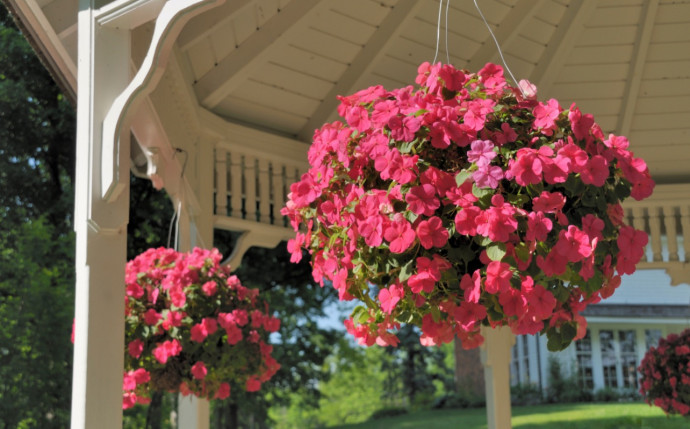
Hanging baskets can be troublesome to maintain, but with careful planning when preparing and planting baskets, and the use of labor-saving products, the pressure eases. Today I wanted to share my fool-proof tips for keeping your annual baskets and planters looking their best all summer long. It does take a little bit of work, but caring for your flowers can be quite therapeutic and a great way to spend some time outdoors. Incorporate these simple tips and recommendations into your gardening routine for your best planters and hanging baskets ever!
Beautifully luxuriant basket displays require some regular care to stay at their best. Start with as big a basket as you can manage; 14–16in is ideal. Plant up with a good quality container compost which has added moisture- holding compounds and slow-release fertilizer. Then follow these tips.
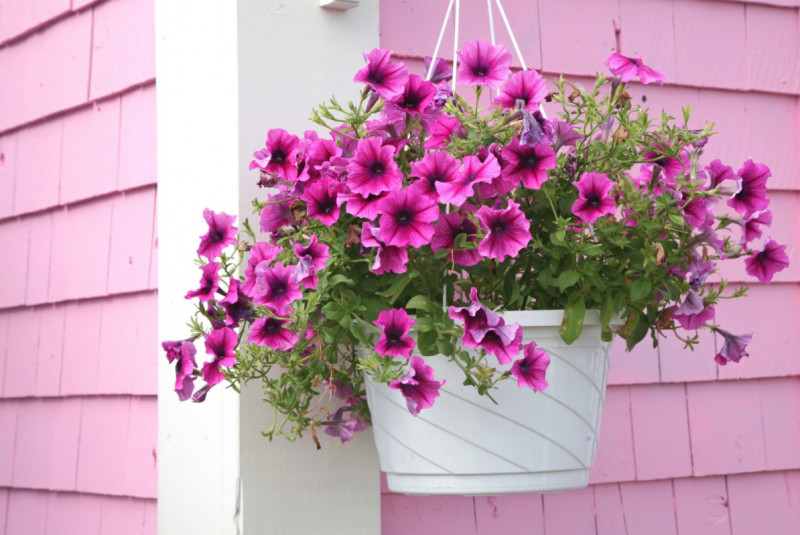
1. Watering
Hanging baskets and flower planters typically need more water than flowers in a garden. How often you will need to water your baskets will vary depending on the time of year and temperatures. I can usually get away with watering our planters every 2-3 days during the cooler spring days, but I up it to once per day during the summer months. If it’s exceptionally hot or windy out {or if you have smaller baskets}, you may even need to water twice per day. Follow these tips for the best water guidelines:
1) Install an automatic irrigation kit or water 16in baskets every two days using a lance attachment. You can make a reservoir - place a plastic pot saucer or even an old ceramic one in the basket base.
2) Try to water your plants at the coolest time of day, so the water doesn’t evaporate as quickly.
3) Smaller hanging baskets and planters will generally dry out quicker than larger baskets {due to the smaller amount of soil}, so be sure to check them more often.
4) Give the hanging baskets enough water so that the water streams down through the drainage holes. The baskets should feel quite heavy with the water weight.
5) If you’re not sure if your planters need water, poke your finger down into the soil about an inch to see if it is dry at that depth. It’s time to water if it is!
6) Remember that there is such a thing as too much water! If the soil is too wet or the planter remains in standing water, root rut can occur.
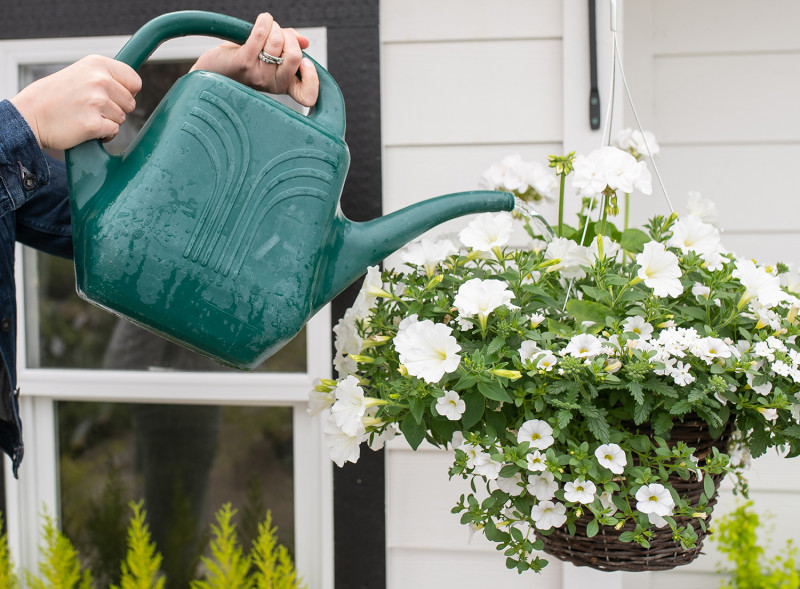
2. Feeding
Add slow-release fertilizer at planting time. In midsummer, start adding liquid feed for flowering containers fortnightly. The fertilizer will replenish any nutrients in the soil that are depleted with watering and will help to create fuller looking baskets. Make sure that you fertilize when the soil is moist – not when the plants are wilting – and follow the directions on the specific fertilizer that you’re using. As your flowers grow, they may require more fertilizer than they did at the beginning of the season. It’s also a good idea to re-fertilize if your flowers are out in a heavy rainfall as the excess rain can drain the fertilizer.
3. Dead-heading
Regularly remove faded flowers and yellowing leaves to keep plants producing new blooms and to reduce disease. Not only does this make your baskets look better, but it also encourages more blooms. There are some flowers, however, that don’t require this, so check the care instructions on the specific flowers you’re planting. It might save you a little time!
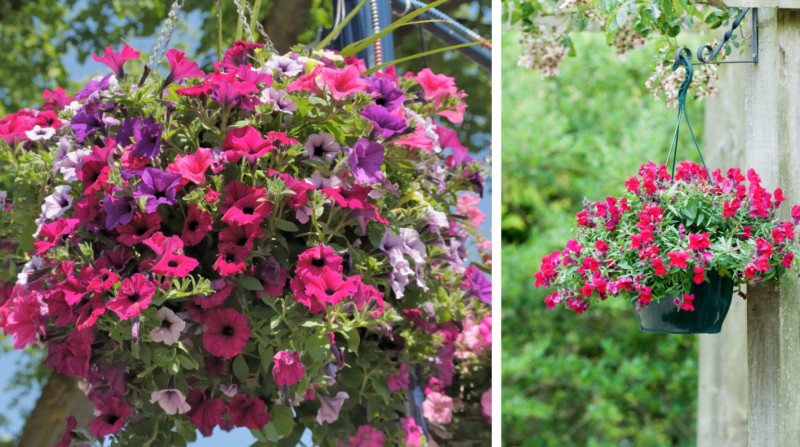
4. Rotate your hanging baskets around.
If you notice the one or two of your baskets is doing a lot better than the rest, try rotating their location if possible. We have two hanging baskets on either side of our front porch, but one side always gets a strong blast of the afternoon sun while the other side is a little more temperate. By mid-summer, one basket was looking great and the other was looking pretty sad. Better switch the baskets every week for better results.
5. Plant only what you can care for.
I’m always so excited to go to the garden store each spring and want to buy everything! As tempting as it can be to buy a ton of flowers to plant, be sure that you only purchase what you actually have time to care for. A few nice hanging baskets and planters that are well-loved looks so much better than a lot of planters that are wilting and straggly. Once you get in the routine and know how long it takes you, you can always add more if you would like!
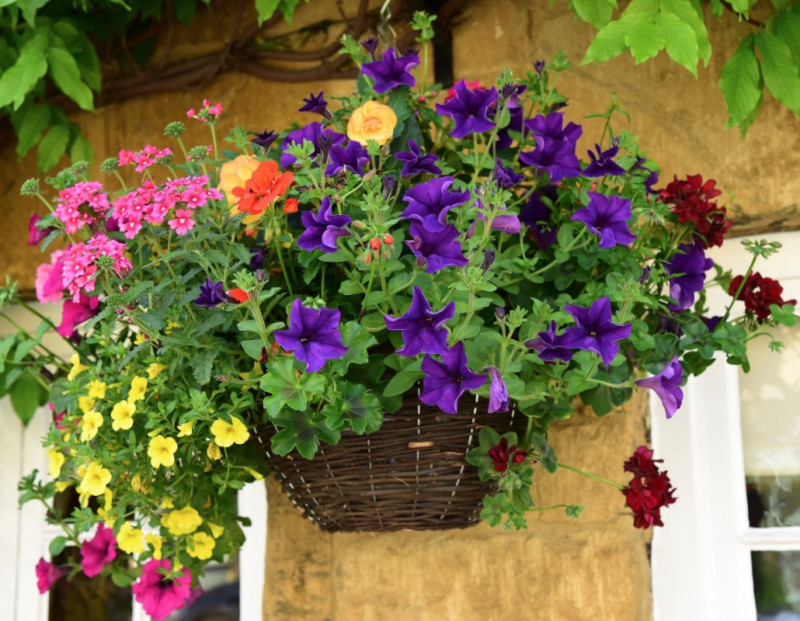
6. Emergency rescue.
Plunge a wilted basket in a bowl or sink of water overnight. It may float and need holding down initially. After recovery, cut out any dead stems and dead-head spent blooms.
